Building an effective internal communication strategy is a great way to make your workplace more productive, collaborative and engaged.
Internal communication is the future of work. Whether you’re growing a small or a large business, your internal communication has a direct impact on your company’s success.
Build a solid internal comms strategy with a right IC platform
The way you communicate with your employees has a tremendous impact on employee productivity, teamwork, employee experience, and ultimately employee engagement.
44 percent of employees feel that managers don’t provide clear information about the company’s vision and 72 percent of employees don’t have a full understanding of the company’s strategy.

Source: IBM
So, what actually internal communication is and who should be responsible for crafting an internal communication strategy?
What are the challenges that most businesses are facing and why your internal communication should be your top priority? Let’s find out!
Internal Communication in a Nutshell
Internal communication (also known as IC) refers to a group of processes or tools that are responsible for effective information flow and collaboration among participants within an organization.
Internal communication involves communication between top management, management and employees.
An open and transparent communication is a great way to make sure your employees understand the company’s mission statement and that everyone is aligned with the company’s values. It also plays an important role in breaking down organizational silos.
Related: Company Values: Definition, Importance and Examples
Your internal communication impacts your business in so many different ways including:
- Day-to-day operations
- Cross-departmental collaboration
- Strategic alignment within the company
- Leadership
- Employee motivation and productivity
- Customer service
- Innovation
- Employee experience
- Company culture
- Employee engagement
- Employee retention
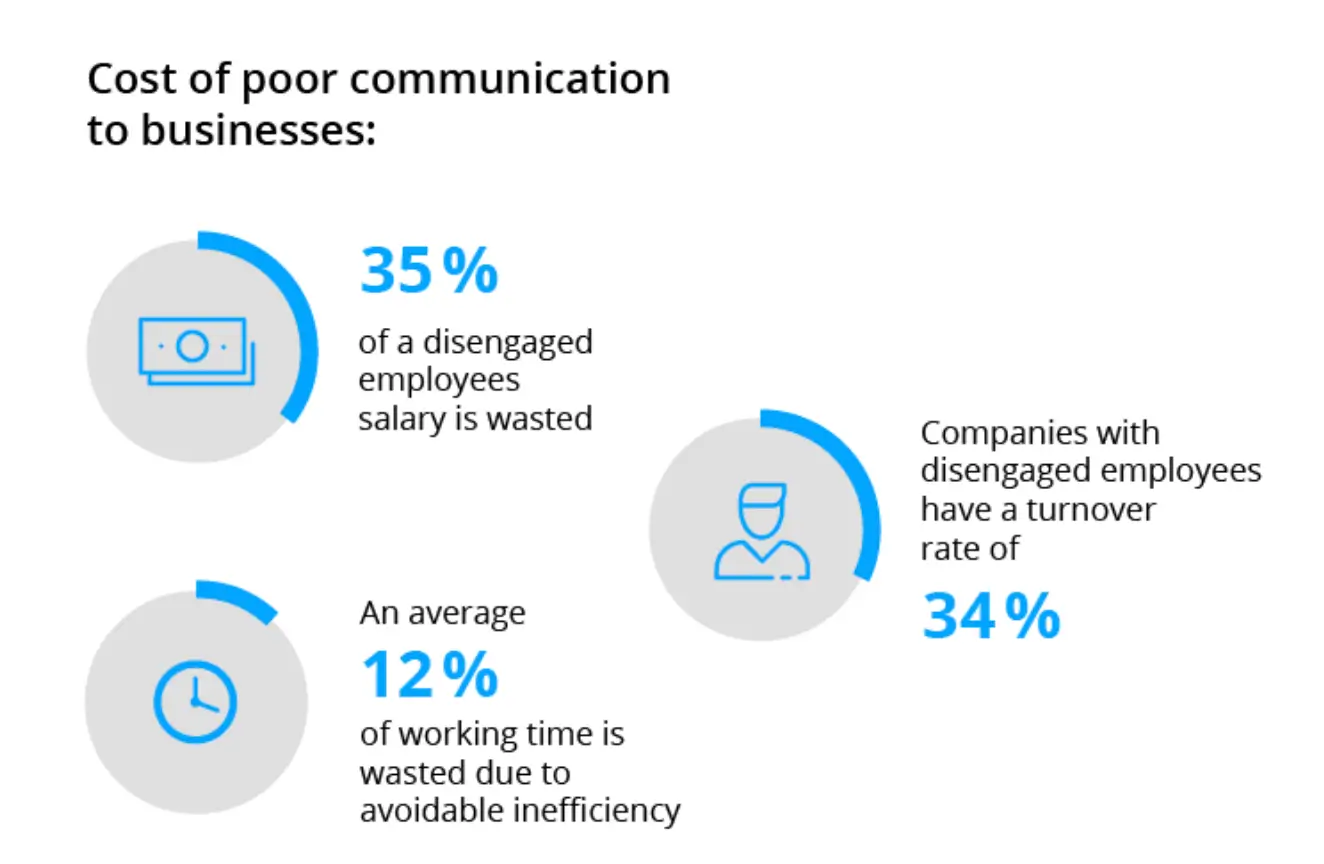
Source: Harvard Business Review
The scope of IC function can span from disseminating organizational information to turning employees into better communicators both internally and externally.
Related: 4 Types of Content Employees Want to Share
Internal Communication Is Everyone’s Responsibility
You’ve probably heard that in large organizations, the internal communication department is responsible for internal communication and that in small businesses, where there is usually no IC department, HR is in charge of the internal communication strategy.
However, your internal communication has a direct impact on your business’s health.
It also involves many different participants: top management, managers and employees. In that sense, IC doesn’t involve only one department. It’s everyone’s responsibility.
Related: Who is Responsible for Internal Communication?
Everyone in your organization should feel responsible for your internal communication:
The CEO develops the company’s vision, goals and mission statement
To get employees excited about your vision, you’ll need to find a way to engage them with your content.
Sending a monthly newsletter to your employees to inform them about company updates or your product roadmap is not the best way to get them on board! Instead, share visual content such as infographics or videos to inform and engage with your employees.
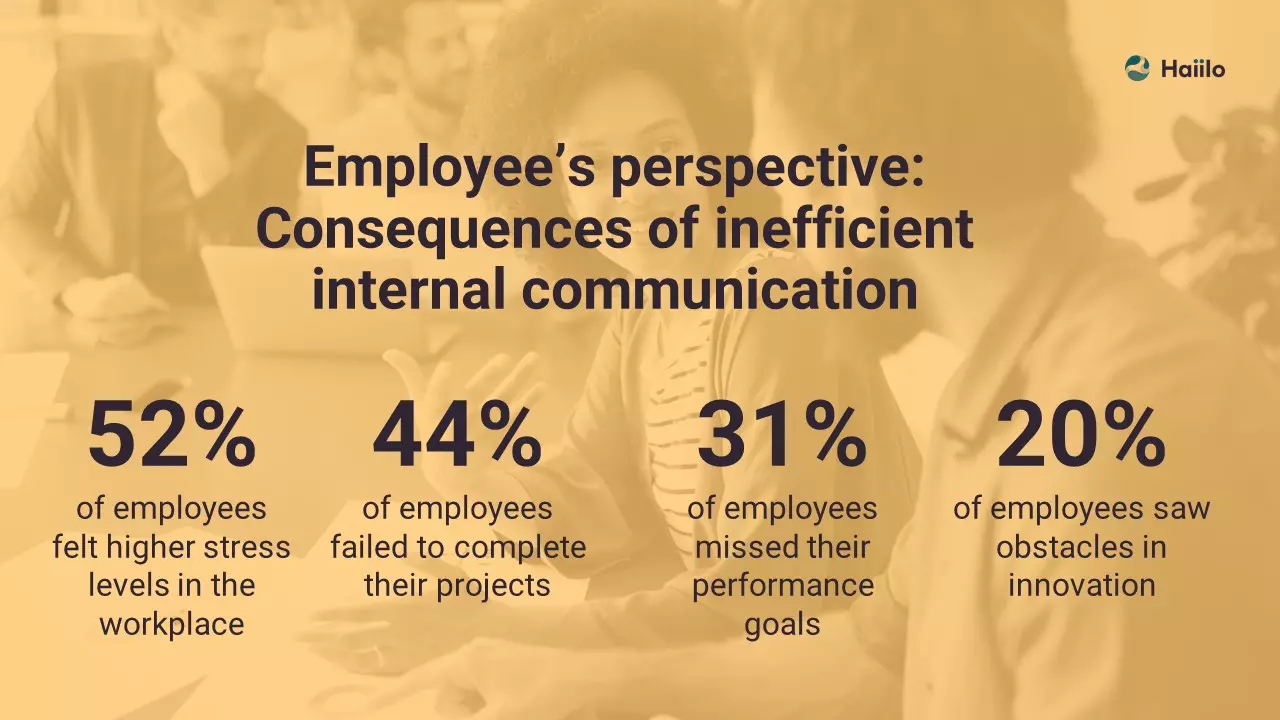
Also, make sure that your content distribution allows you to reach the right employee at the right time.
If employees miss out on important information, they may feel frustrated which may impact their morale and productivity.
Related: Why Your Employees Are Missing out on Important Information
Managers explain the company goals and how employees’ role fits in the big picture
It’s important that employees have a clear understanding of how their role impacts the company’s success.
Just 40% of internal comms professionals believe that employees understand ‘well’ or ‘very well’ the contribution they’re making to their organization’s strategy.
Encourage two-way communication to make sure managers and employees are aligned with the company’s vision.
The perception employees have about an organization and their role has a direct impact on their motivation and productivity.
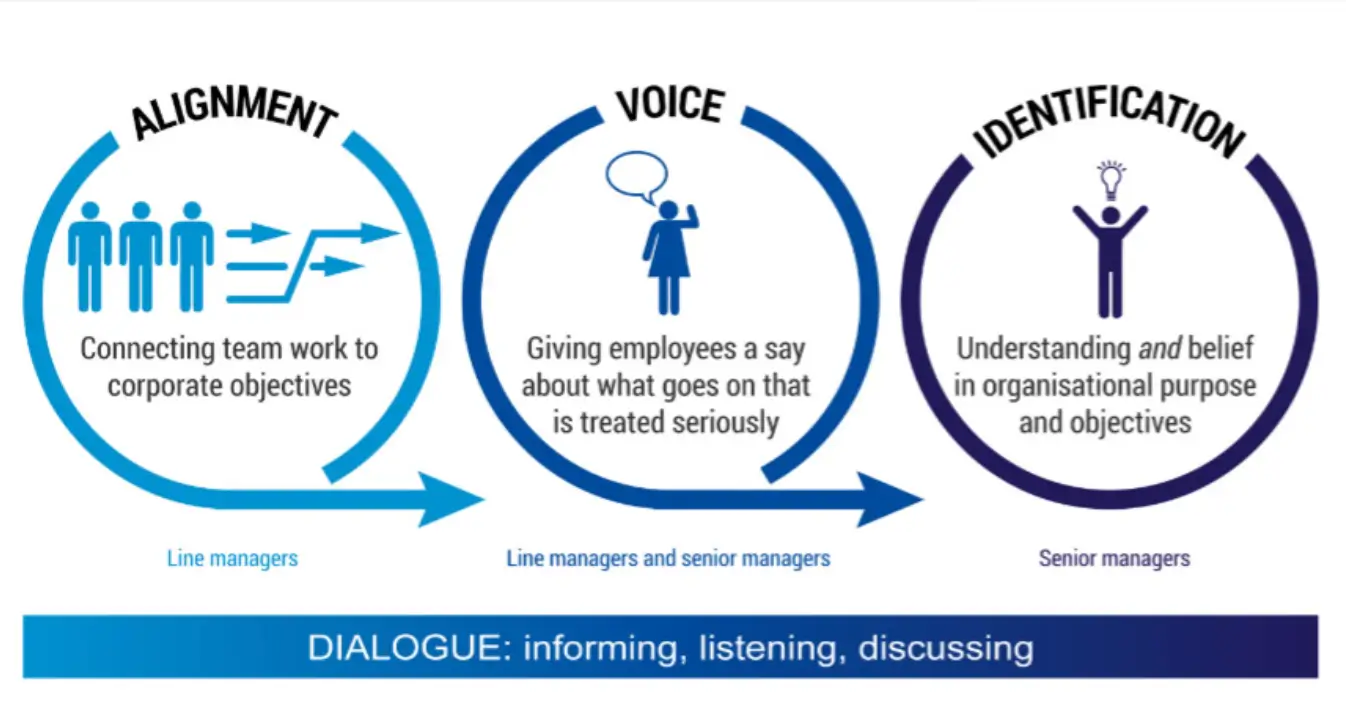
Source: PR Place
Employees contribute to your internal communication by creating and sharing informative content
When it comes to internal communication, it’s important to give your employees a voice.
Don’t let your employees have a passive role in your strategy. In most organizations, employees want to feel heard and to be more involved in the internal communication strategy.
Related: Kate Pritchard on How Leadership Can Impact Employee Engagement
You can for example encourage your employees to write blog posts or to make short videos where they share tips and best practices with their team. The idea is to encourage them to build their thought leadership through content creation.
Most Common Internal Communication Challenges to Tackle
Although internal communication is an important organizational concept, its presence may be sorely lacking in most businesses.
Data collected by experts suggest that 60 percent of employers don’t have a long-term internal communication plan, even though IC experts state that improving internal communication should be a number one priority.
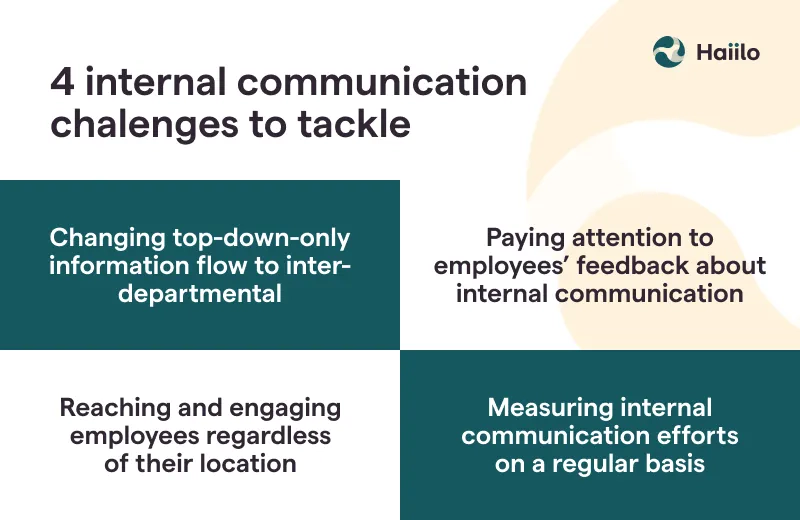
Internal communication challenges that most businesses are facing include:
Challenge #1: Changing top-down communication to horizontal communication
Having an effective internal communication strategy in place doesn’t mean having the CEO sharing company updates to the employees.
Instead, employees should be involved in the strategy and encouraged to initiate discussions. Remember, your internal communication should be a two-way street.
Challenge #2: Improving the internal communication in place based on employees’ feedback
When it comes to internal communication, collecting employees’ feedback is a good start but IC and HR teams need to find ways to actually implement solutions based on the feedback they received from the employees.
Challenge #3: Engaging employees with informative content no matter where they are located
Nowadays, more and more employees work remotely, are on the road or work with colleagues located in different parts of the world.
It can be challenging for companies with complex organizational structures to make sure that employees get the right information at the right time.
Challenge #4: Measuring the results of the internal communication strategy in place
It can be tricky to define what KPIs to track and how to collect data to be able to measure the performance of the strategy in place.
In fact, 60% of communication professionals don’t have a concrete strategy in place to measure their internal communication efforts.

This lack of metrics leads to several issues:
- Information gets scattered across several departments, platforms and channels within the organization
- Aligning the internal communication strategy with the business goals becomes tricky
- Internal communicators can’t take their strategy to the next level
- Messages shared with employees become confusing
- There are misconceptions around what internal communication does
- Proving the value of internal communication becomes a challenge
- Internal communicators are not considered as strategic business partners
📹 Also learn about How to Measure Internal Communication (IC): Best Practices & Examples or check out our Masterclass about how to set up IC goals.
Top Reasons Why You Can’t Ignore Internal Communication at Your Workplace
IC concepts can be used to enhance aspects of the employee experience in the workplace, from collaboration, to employee productivity and employee advocacy.
Let’s take a closer look:
1. Effective Internal Communication Boosts Employee Productivity and Teamwork
Your internal communication has a clear impact on your employees’ productivity.
The McKinsey Global Institute found that employee productivity increases by 20-25% in organizations where employees are connected.
Even though email is a primary form of communication for most businesses, cluttering up an inbox with incessant or irrelevant email notifications can actually have a detrimental effect on employee productivity.
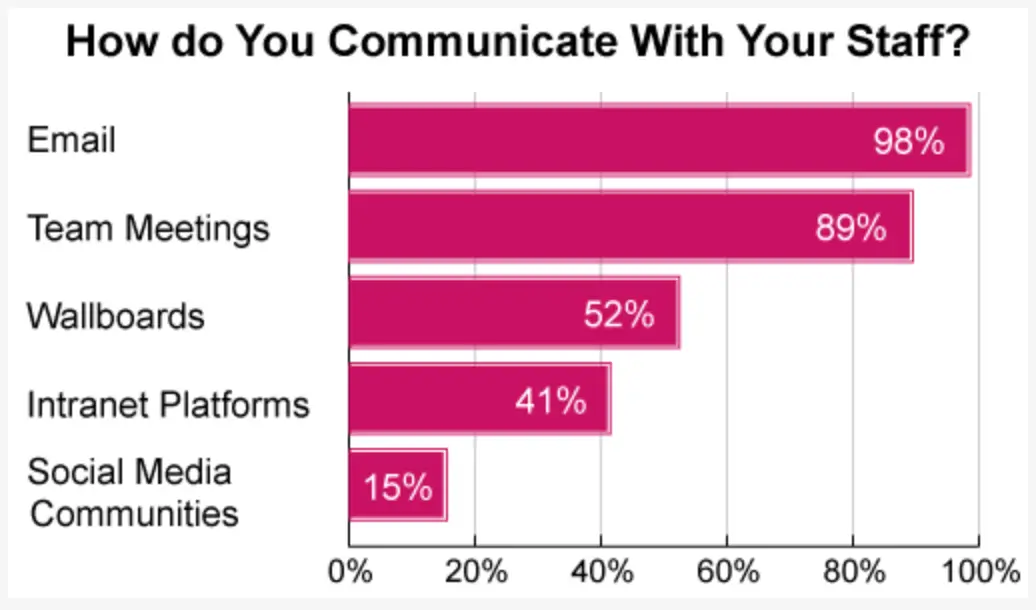
Source: Call Center Helper
Think about it: employees check on average their emails 36 times an hour. How can they focus on their tasks and stay productive while they keep checking their inbox?
After each interruption, it takes employees 23 minutes to get back to their task.

In parallel, the McKinsey Global Institute found that employees spend nearly 20 precent of their workweek looking for internal information or tracking down colleagues who can help with specific tasks. What’s more, only 13% of employees use their intranet daily.
Emails or Intranets are definitely not the best solutions to inform and engage with employees!
Related: Top 5 Communication Skills and How to Improve Them
Instead, use an employee communications platform that makes it easy for you to share the right information with the right employee at the right time.
Using an employee communications platform instead of emails or intranets is a great way to make sure that employees can easily find the information they need when they need it. It also helps them interact with content specific to their role, without being distracted by information overload.

Not only does your internal communication improve employee productivity, it also enhances teamwork, encourages innovation, and drives collaboration among departments.
Related: 5 Ways Internal Communication Makes a Digital Workplace More Productive
When employees have access to the latest product updates and are able to share information and ideas with their colleagues, they can make decisions and deliver projects faster.

2. Internal Communication Improves Employee Experience
83 percent of HR leaders say the employee experience is either “important” or “very important” but how do you actually improve employee experience?
The answer lies in your internal communication!
When employees have a clear understanding of the impact of their work on the business, they feel valued and even more motivated to go the extra mile to overreach targets.
In other words, your internal communication has a great impact on the employee experience you deliver.
Clear communication surrounding an employee’s performance and contribution to the company’s success is of paramount importance.
The perception employees have about the organization and their role within it greatly impacts their morale, motivation and satisfaction.
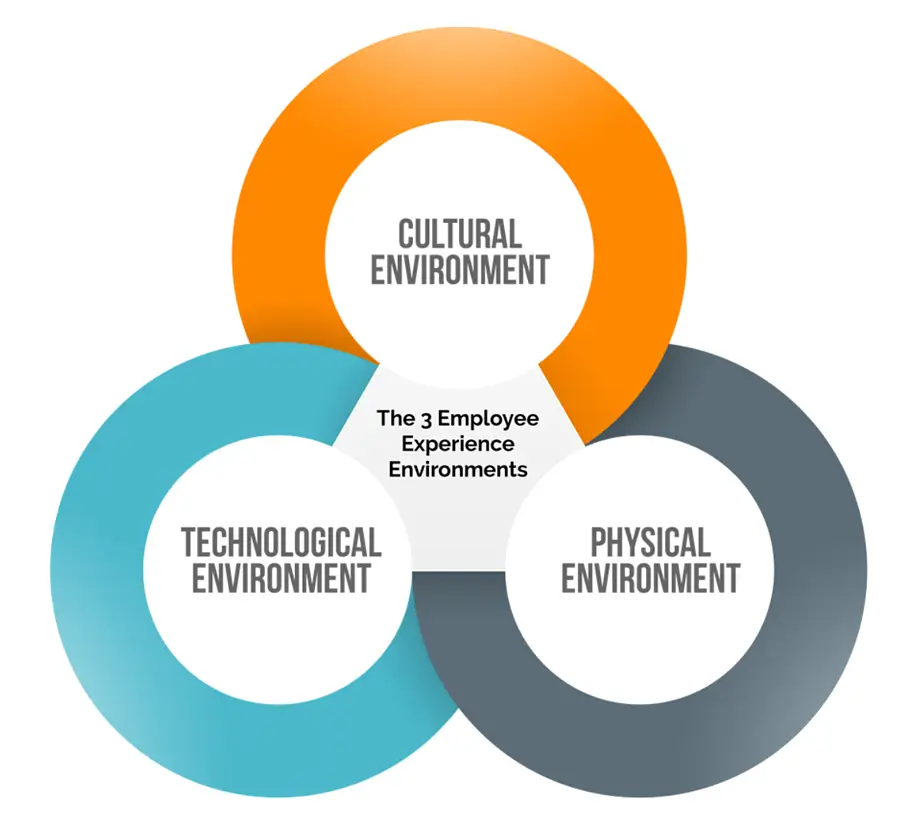
Source: Forbes
If you want to improve the employee experience you’re delivering, you’ll need to build a solid internal communication.
According to Andrew Spence, Strategic Workforce Advisor, “knowledge sharing can be useful in allowing employees to find purpose and meaning in their work”. For example, use your internal communication to build a strong learning culture where employees are encouraged to develop their skills.
Many HR professionals are turning to internal communication to provide context around employee performance and feedback, and to turn those insights into progress against individual and organizational goals.
Performance management tools give both the employee and manager consistent, real-time data that they can then use to establish a framework for continuous conversations around goals.
Frequent check-ins increase the flow of communication between both parties and help employees feel supported in their professional growth.
3. The Way You Communicate with Your Team Has a Great Impact on Employee Engagement
Building an effective internal communication is a great way to engage with your employees.
When employees are aligned with the company’s vision and goals, feel valued, and know that their role has a direct impact on the company’s success, they are more likely to feel engaged and stay with your company. Simply put, your internal communication has a direct impact on employee engagement.
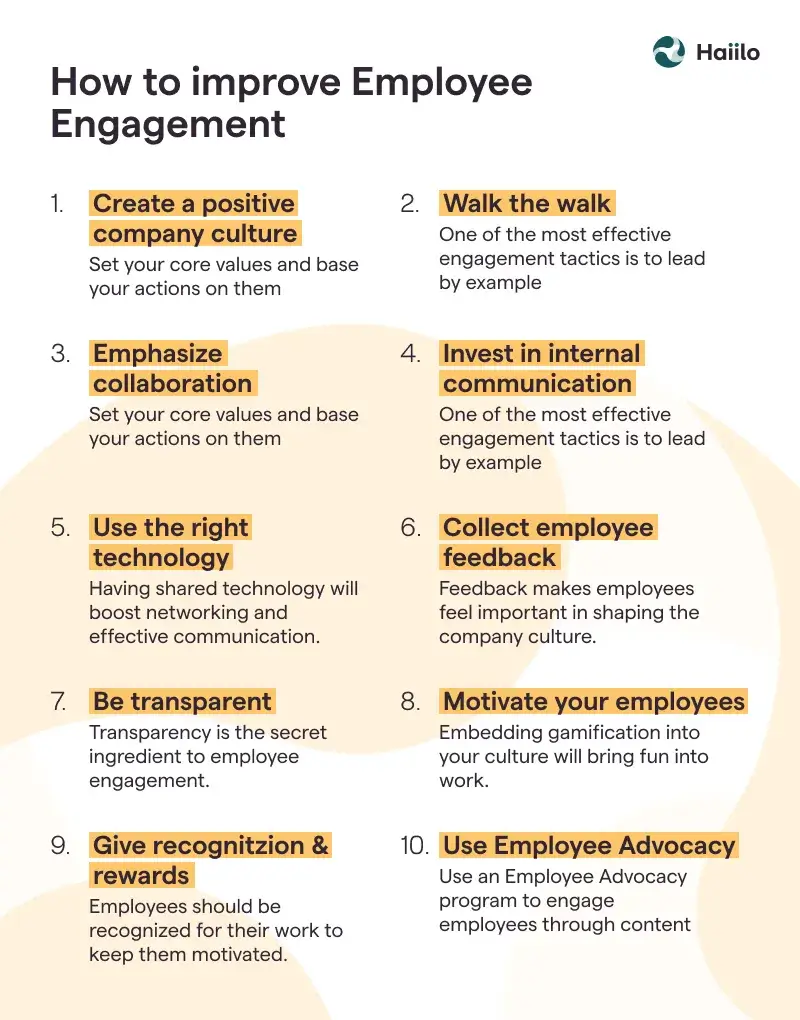
What’s more, informed and engaged employees are more likely to become brand ambassadors. And when it comes to employee advocacy, your internal communication is crucial.
Your employees need to have a clear understanding of the company’s vision and product to share that knowledge with their personal networks.
Your employees are the first ones to witness your brand, values, and objectives; they’re also the ones that communicate that experience to the outside world.
Related: How Your Employees Can Help You Attract the Right Talent
An effective internal communication helps business leaders keep employees informed about how the brand is evolving so they can share that information with their personal networks.
The best brands enable employees to connect with and share the vision of a company by providing clarity into goals, milestones, process changes, and other initiatives.
Related: 5 Internal Communications Best Practices for Driving Engagement [Infographic Included]
When employees feel engaged, they are much more likely to share your brand messaging. This can provide a much-needed boost for HR and recruiting staff looking to create a great employer brand and build networks of trust with candidates.
Improve Your Internal Communication with Haiilo Stories
As an internal communication practitioner, you need to adapt your internal communication strategy to your employees’ expectations.
You need to understand their needs and what they expect from you. In pother words, you need to speak their language. It’s the only way you can get their attention and get your message through.
Think about it: most employees (74%) have the feeling they’re missing out on important information such as company news. Basically, that means that the majority of the employees don’t know what’s going on in the company!
In parallel, they have to deal with overflowing inboxes (remember that 62% of the emails received by employees are not important), and they spend 2.5 hours per day looking for the information they need to do their job.
That doesn’t necessarily means that you’re sharing too much information with your employees.

Instead, you may want to reconsider the way you’re sharing your messages with your employees.
Ask yourself questions such as:
- Do you have a good understanding of your employees’ needs?
- Are you segmenting your internal audiences?
- Are you using the right communication channels for your internal communication?
- Do you take into account the channels your employees feel the most comfortable with?
- Do you make sure that each of your employees received the information they need at the right time?
- What about your content, it is engaging?
- Do you ask your employees for feedback?
By helping you to segment your internal audiences, Haiilo Stories helps you make sure that your employees get the information they need when they need it, nothing more, nothing else.
What’s more, Haiilo Stories helps you communicate with your employees through their favorite channels and devices, whether it’s a desktop, mobile, an employee news app, or a personalized intranet feed or a tailored newsletter.
Takeaways
Your internal communication has a great impact on employee productivity, the employee experience you deliver, employee engagement and ultimately your employee advocacy strategy.
The key is to build an internal communication strategy that involves everyone within the organization: top management, managers and employees.
Organizations that have a solid internal communication strategy in place are better equipped to have superior conversations with employees around performance, experience and engagement.
Remember, your informed and engaged employees are your best brand ambassadors!









